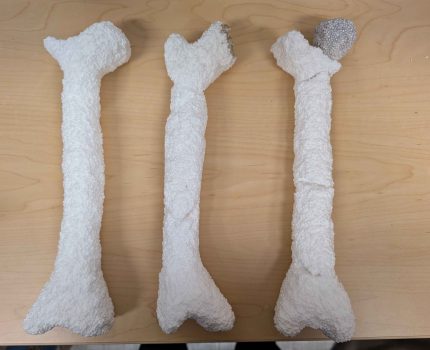Bleeding disorders like hemophilia or von Willebrand’s, that cause thin blood can increase your risk of osteoporosis and bone fractures. Osteoporosis is a condition where someone’s bones are fragile and weakened. Osteoporosis occurs when osteoclasts break away at the bone faster than osteoblasts can replace it. There are many reasons that thinning blood could lead to osteoporosis. The more important ones being lack of proper nutritional distribution, lack of activity due to pain, and
Firstly, Lack of factor viii which is a protein within blood that acts like a barrier to stop bleeding, is one of the more common causes for osteoporosis in people with bleeding disorders. Factor viii is what begins the blood clotting process. Additionally, lack of platelets is the most common cause of thin blood. Your blood could lack platelets due to your bone marrow stopping production because of poor nutrition, infection, or inheritance genetic conditions.
Conditions like hemophilia and Von Willebrand’s can also cause lack of proper blood flow to bones. Thin blood could cause your bones to thin and become fragile by poor nutrient delivery and lack of oxygen supply as well. Improper delivery of nutrients through the bloodstream like calcium or phosphorus can cause an imbalance in osteoclasts and osteoblasts activity. Without proper calcium levels, the body will start to break down bone faster to maintain proper calcium levels. The breakdown of bones is what releases calcium into the body. The imbalance in activity with the osteoclasts operating at a higher rate than the osteoblasts causes the bones to break down faster than they can be built which leads to osteoporosis. Oxygen is essential in bone tissue healing. Lack of proper oxygen distribution can cause delayed repair in fractures and damage through the bone.
Another reason someone could develop osteoporosis by having a blood thinning disorder like Von Willebrand’s or hemophilia is excessive joint bleeding. Excessive bleeding throughout the body could cause pain everywhere but especially in the joints. High levels of pain can cause somebody to lessen their physical activity. Lack of physical activity could cause someone’s bones to become more fragile as they are not being used enough. Lack of activity causes the bone mass and strength to decrease to levels that are difficult to repair.
Overall, having a blood thinning disorder like hemophilia or von willibrands puts your body at higher risk for developing osteoporosis or bone fractures. Lacking proper nutrition in the body, specifically unbalanced calcium and phosphorus levels will cause an imbalance of osteoclast and osteoblast activity which leads to weakened and fragile bones. Lack of oxygen flow to bones also delays repairment in the bones which causes the bones to remain damaged for longer and become weak. Increased pain levels from bleeding in joints or just throughout the body can cause a decreased level of physical activity and lead to bones becoming more fragile over time. The best way to decrease your chances of developing osteoporosis if you have a bleeding disorder is to make sure your phosphorus and calcium levels are correct, there is proper oxygen flow to your bones, and you maintain a healthy amount of physical activity to encourage a healthy bone mass and strength.
Sources:
Common blood thinner increases risk of bone fracture, Gwen Ericson,( 2006)
Bone Health and Osteoporosis, Office of the Surgeon General (US); (2004)
Low Bone Mineral Density in Hemophiliacs, Jennifer Gebetsberger , Michael Schirmer , Walter J Wurzer , Werner Streif , (2022)
Bone Mineral Density in Hemophilia Patients, Nader Roushan , Alipasha Meysamie , Mohammadreza Managhchi , Javad Esmaili , Tarane Dormohammadi , ( 2014)
What People with Bleeding Disorders Need to Know About Osteoporosis, Kathryn Anne Stewart, (2022)
Functions of blood: transport around the body, )
Skeletal Blood Flow in Bone Repair and Maintenance, Ryan E Tomlinson , Matthew J Silva , (2013)
Physical Activity and Bone Health, Melissa I Carter , Pamela S Hinton (2014)




